(For an introduction to this series, read Part 1.)
The Religion of Light teachings are like the resplendent sun: they have the power to dissolve the dark realm and destroy evil forever. (Stone Sutra 2:22)
I’ve been going back and forth on whether I want to divide posts in this series by sutra or by topic, seeing as there is a lot of overlap. At last I’ve decided I’ll try to do it by sutra, so we’ll see how it goes.
Here’s a list of all eight Jesus Sutras:
Early Sutras (written/adapted by Persians in the late 630s–50s):
- The Sutra of the Teachings of the World-Honored One
- The Sutra of Cause, Effect, and Salvation
- The Sutra of Origins
- The Sutra of Jesus Christ
Late (Liturgical) Sutras (written by Chinese monks primarily at the end of the eighth century, though one comes from 720):
- Taking Refuge in the Trinity
- Invocation of the Dharma Kings and Sacred Sutras, or Let Us Praise
- The Sutra of Returning to Your Original Nature
- The Christian Liturgy in Praise of the Three Sacred Powers, or The Supreme
And then, there’s a ninth “Stone Sutra,” if one wants to call it that. I’ll start there, as it offers a good overview of what can be found in the other eight. 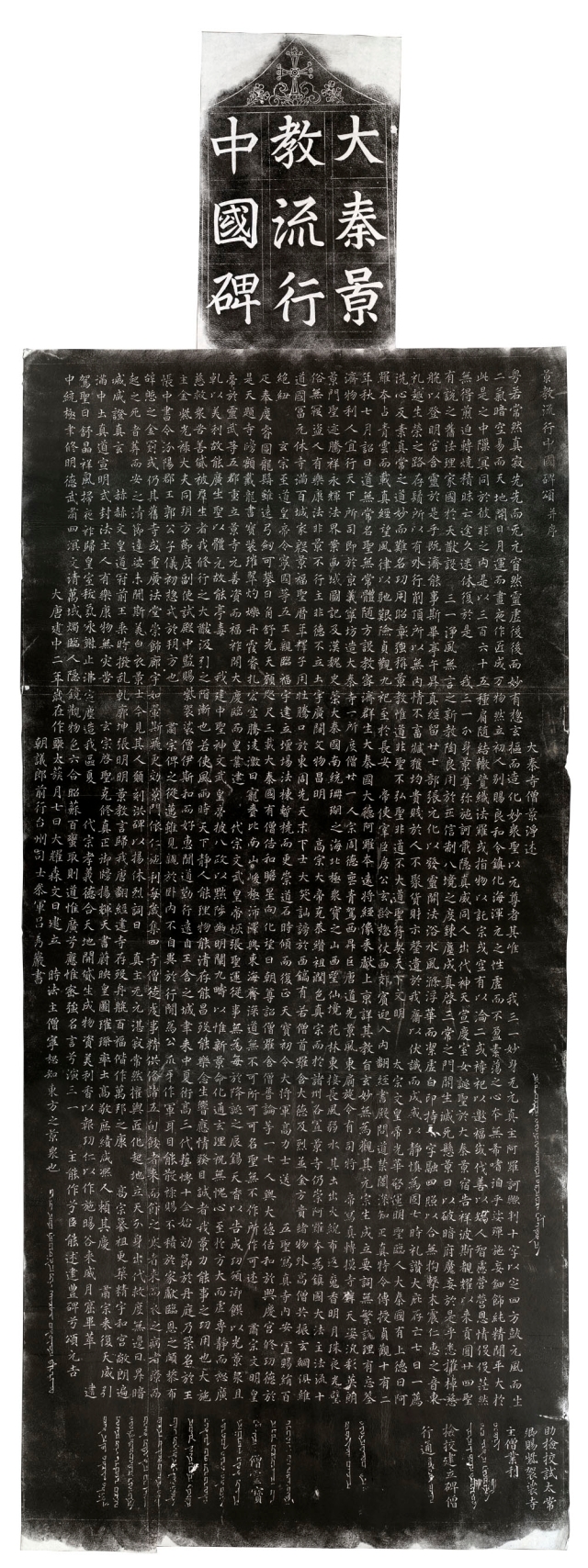 As I mentioned in my last post, the Stone Sutra is the name given to the stele at Xian (also known as the Nestorian Stele, the Monument Sutra, or the Stele of Sianfu), erected in 781 to commemorate the propagation of the Religion of Light (Christianity) in the Middle Kingdom, and to declare “the Law of our Savior.” It’s now on display in the Forest of Stone Steles Museum in Xian.
As I mentioned in my last post, the Stone Sutra is the name given to the stele at Xian (also known as the Nestorian Stele, the Monument Sutra, or the Stele of Sianfu), erected in 781 to commemorate the propagation of the Religion of Light (Christianity) in the Middle Kingdom, and to declare “the Law of our Savior.” It’s now on display in the Forest of Stone Steles Museum in Xian.
Made of black limestone, standing 12 feet high, and mounted on a huge carved tortoise, the stele contains over 2,000 Chinese characters (and some Syriac), written by Jingjing, a priest of the Da Qin monastery. The top inscription contains nine large characters that spell out “Da Qin Religion of Light: Record of Its Transmission throughout China.” The text that follows recounts most of the history of the Church in China up to 781, as well as details about the person of Jesus Christ. I’ll share mainly the latter. Unless otherwise indicated, all parenthetical references in this post refer to chapters and verses of this “Stone Sutra,” as assigned by Martin Palmer. For more information or to read the full text, I highly recommend you buy his book The Jesus Sutras. (There are two other books that I know of that also contain English translations of the Jesus Sutras: The Lost Sutras of Jesus: Unlocking the Ancient Wisdom of the Xian Monks, and The Secret Sayings of Ye Su: A Silk Road Gospel.)
Creation
We’re all familiar with the opening verses of Genesis 1: “In the beginning, God created the heaven and the earth. And the earth was without form, and void; and darkness was upon the face of the deep. And the Spirit of God moved upon the face of the waters. And God said, Let there be light: and there was light.”
Here’s an Eastern take on that same event, with obvious Taoist influence:
In the beginning was the natural constant, the true stillness of the Origin, and the primordial void of the Most High. Then the spirit of the void emerged as the Most High Lord, moving in mysterious ways to enlighten the holy ones. He is Joshua, my True Lord of the Void, who embodies the three subtle and wondrous bodies, and who was condemned to the cross so that the people of the four directions could be saved. (2:1-3)
Notice how these verses affirm the constant and eternal nature of God, his sovereign authority (“Most High Lord”), the enlightening function of his Spirit, the doctrine of the Trinity, and the universal saving power of Jesus’s crucifixion.
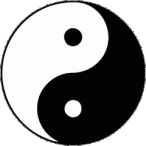 Chapter 2 also goes on to describe how the Most High Lord created the twin forces of yin and yang, with the lighter vapors of yang rising to form heaven and the sun, and the heavier vapors of yin sinking to form Earth and the moon. These two forces then gave birth to chi (life breath, or sustaining energy flow), which forms part of every living thing. This idea is based on chapter 42 of the Tao Te Ching, Taoism’s most sacred and foundational text. What do you think about this? Is there a significant difference between saying that God created yin and yang, which in turn created heaven, earth, and everything else, versus God created all things directly?
Chapter 2 also goes on to describe how the Most High Lord created the twin forces of yin and yang, with the lighter vapors of yang rising to form heaven and the sun, and the heavier vapors of yin sinking to form Earth and the moon. These two forces then gave birth to chi (life breath, or sustaining energy flow), which forms part of every living thing. This idea is based on chapter 42 of the Tao Te Ching, Taoism’s most sacred and foundational text. What do you think about this? Is there a significant difference between saying that God created yin and yang, which in turn created heaven, earth, and everything else, versus God created all things directly?
Original nature
Furthermore, chapter 2 describes God giving to the first people a nature of goodness: “Their minds were empty; they were content; and their hearts were simple and innocent. Originally they had no desire” (2:8-9). This is a classic Taoist description of human nature at its purest, most faithful to the Tao. Taoists believe that all human nature, like the nature of the universe itself, is intrinsically good, and that even though our true natures become muddied by things like greed, pride, and formalism, they are always there to be recovered, to be realigned with the natural rhythm of things. Buddhism has a similar teaching, called “Buddha-nature,” which refers to the natural awakened state of the mind, free of concepts, thoughts, and emotions (which only delude us), and full of pure wisdom and compassion. The goal of Buddhism is to realize this original nature, and thereby become “an enlightened one.”
The Bible, too, speaks of an original state of goodness, in which human beings naturally reflected the perfect beauty and holiness of God, having been made in his image (Genesis 1:27). After God created man, he pronounced his creation good (Genesis 1:31); Adam and Eve enjoyed God’s unmediated presence and felt no shame before him (Genesis 2:25). Their hearts were “simple and innocent,” it might be said, and untainted by selfish desire. Taoists would say that they lived in harmony with the Tao. A major point of difference, though, is that according to the Bible, humans are no longer born with this perfect nature; instead, because of original sin, we possess a nature that is depraved at its core. So rather than our true selves lying somewhere inside us, able to be uncovered and reclaimed through self-effort, Christianity teaches that our true natures lie very much outside us, and can be accessed only through Jesus Christ (Ezekiel 36:26; 2 Corinthians 5:17).
It’s fascinating to see how the Jesus Sutras reconcile these disparate views—for example, by presenting Jesus as the embodiment of original nature, and as a bodhisattva who taught how we, with his guidance, can undergo “the holy transformation [of nature] beyond all reckoning” (The Sutra of the Teachings of the World-Honored One, 4:14) . Problematic? It can be. More on this later.
Sin and the need for a savior
The Jesus Sutras teach that because people’s innate good nature had become confused and obscured (Christians might say “marred by sin”), God had to come to Earth as Ye Su (Jesus). “Therefore, my Lord Ye Su, the One emanating in three subtle bodies, hid his true power, became a human, and came on behalf of the Lord of Heaven to preach the good teachings” (2:17).
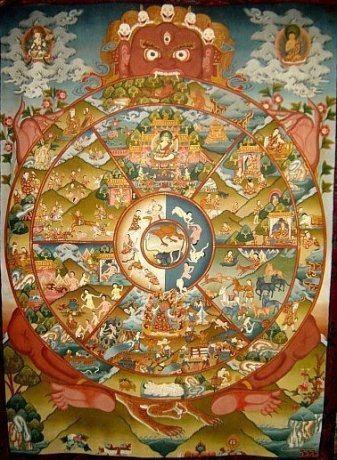
A Tibetan thangka depicting Yama, the Lord of Death, holding the Wheel of Life, which represents samsara. The center wheel depicts a pig chasing a rooster chasing a snake, representing how mankind is trapped in an endless cycle of craving, hatred, and ignorance.
Most Eastern religions teach the doctrine of karma—the cause-and-effect force that drives reincarnation. The idea is that all actions have consequences that are unfulfilled when you die; therefore, you have to be reborn to continue working through the effects of past actions. The only way to escape this ever-turning wheel of samsara (suffering) is to become so perfect that nothing you do causes any bad effects.
Rather than dismissing this doctrine as false and demonic, the Persian missionaries fit Jesus into the context of karma, presenting him as the solution to the problem of endless rebirth. I will discuss this more when I talk about the Sutra of Cause, Effect, and Salvation. But for now I’ll just say that this savior figure obviously resonated with the Chinese; they describe him on the stele as the one who rows or launches “the raft of salvation and compassion” that ferries souls across the great divide and away from reincarnation (2:23).
The Stone Sutra does not explicitly mention Jesus’s resurrection, as some of the other sutras do, but it does mention his ascension: “He carried out the work of deliverance, and when the task was completed, He ascended to immortality in broad daylight” (2:24). Martin Palmer notes that this mention is significant because most Eastern immortals ascend secretly and are discovered to be immortals only after their coffins are lifted and found to be empty. By saying that Jesus ascended in broad daylight, the text emphasizes a very special form of immortality.
Jesus’s cross rising from a lotus
The stele on which this sutra is written is itself a work of art. At the apex of the stele’s inscription, on the black limestone, is a delicate carving of a cross rising from a cloud-wreathed lotus blossom.
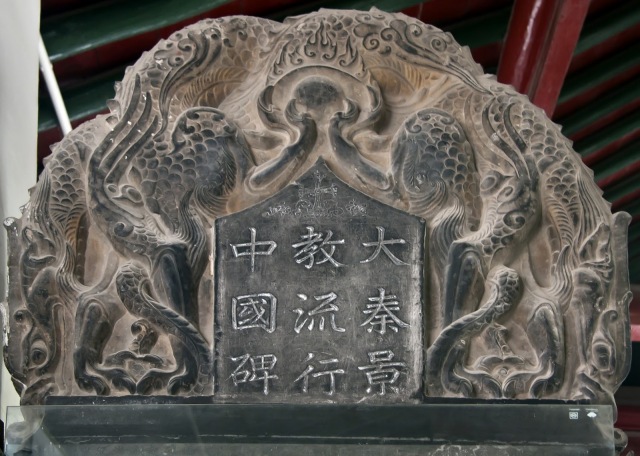
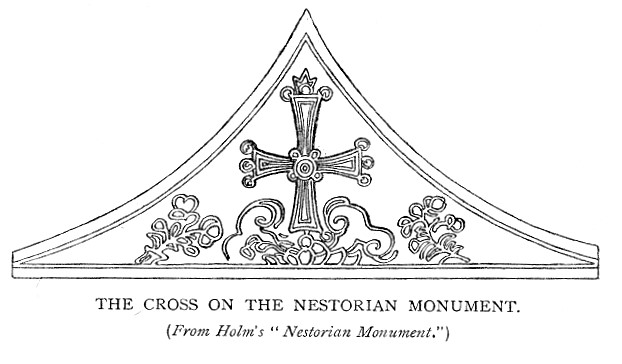 The lotus is an important Buddhist symbol of the mind rising above the mire of worldly existence. The roots of the lotus are in mud, but its stem grows up through murky waters and its white flower blooms on the surface; here it shows no sign of taintedness, but is only beautiful and pristine. Buddhist deities are often pictured seated on lotuses, representing their attainment of spiritual perfection and total mental purity.
The lotus is an important Buddhist symbol of the mind rising above the mire of worldly existence. The roots of the lotus are in mud, but its stem grows up through murky waters and its white flower blooms on the surface; here it shows no sign of taintedness, but is only beautiful and pristine. Buddhist deities are often pictured seated on lotuses, representing their attainment of spiritual perfection and total mental purity.
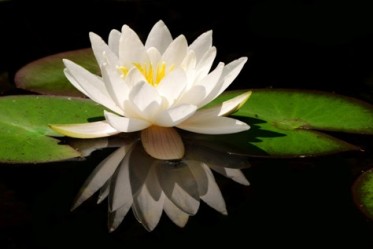 By incorporating the Christian cross into Buddhist iconography, the Chinese are acknowledging the buddhahood (enlightened status) of Jesus. Jesus had to fight through all the hardships and pains of this world, but he rose above them all, triumphantly (as his resurrection proves), and he brought humanity with him. Like the lotus, Jesus is rooted to earth, fully human, but he also exists on a plane wholly above the mud of this world. In the monument’s image, the centrality of the cross, (to Christians) a symbol of death but also of death conquered, suggests that Christ’s crucifixion was the most beautiful and glorious demonstration of his person, and the reason he is due worship. The cross is ultimate reality and truth; through it, Jesus enlightens all peoples.
By incorporating the Christian cross into Buddhist iconography, the Chinese are acknowledging the buddhahood (enlightened status) of Jesus. Jesus had to fight through all the hardships and pains of this world, but he rose above them all, triumphantly (as his resurrection proves), and he brought humanity with him. Like the lotus, Jesus is rooted to earth, fully human, but he also exists on a plane wholly above the mud of this world. In the monument’s image, the centrality of the cross, (to Christians) a symbol of death but also of death conquered, suggests that Christ’s crucifixion was the most beautiful and glorious demonstration of his person, and the reason he is due worship. The cross is ultimate reality and truth; through it, Jesus enlightens all peoples.
The stone tablet above the black limestone offers an additional symbol to unpack: the flaming pearl, clenched by two curling dragons (lungs). In Chinese art the flaming pearl can symbolize many things, some common ones being healing, transformation, prosperity, power, wisdom, or truth. Whatever its symbolism, it is always portrayed as a highly sought-after object, usually being chased by one or more dragons.
The Bible speaks of pearls in two main instances. First, in Matthew 7:6, when Jesus tells his disciples not to cast their pearls before swine; here, the “pearls” are understood to be referring to the gospel—meaning don’t waste your time sharing the gospel to those who are persistently hostile to it. Second, in Matthew 13:45-46, Jesus says, “Again, the kingdom of heaven is like a merchant looking for fine pearls. When he found one of great value, he went away and sold everything he had and bought it.” In this scenario, you are the pearl of great value, and Jesus is the buyer; he purchased you at infinite cost to himself, because he values you that much.
Any of these meanings makes sense in the context of the Jesus Sutras. The pearl that tops the stele is in a position of honor; it is being lifted up—just as Jesus was lifted up on the cross and is being lifted up still, at God’s right hand. Just as we are if we trust in Jesus as the Way, the Truth, and the Life, and allow him to heal and transform us. And just as the gospel is as it continues to spread throughout the world, reaching all peoples.

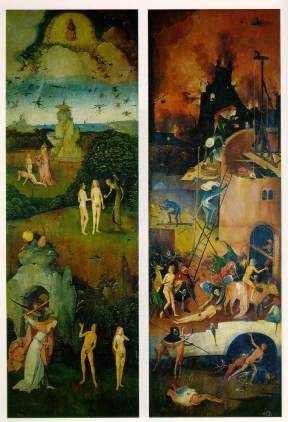
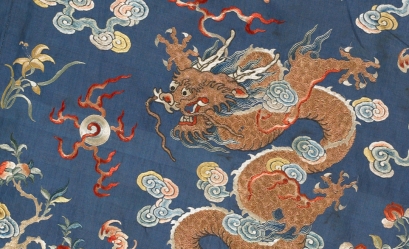

Pingback: Book Review: “On a Friday Noon” | The Jesus Question
Pingback: Book Review: The Image of God in an Image Driven Age, ed. Beth Felker Jones and Jeffrey W. Barbeau – Art & Theology
Thank you for this series, most interesting. I think contextualizing the message of God is crucial for understanding and acceptance in different cultures.
I don’t agree that the Bible teaches that “our true natures lie very much outside us”, and I don’t think the texts you refer to support this. Eventually we are made in the image of God, and the fact that we need to be restored and transformed doesn’t mean that our true nature is outside us — where then would it reside??
By the way, Samsara does not mean suffering, it refers to the transitory and cyclic nature of the world we find ourselves in.
Thank you for your comments, Peter. I agree with you re: true nature. I wrote this six years ago and would articulate it differently now, with more nuance. My point was that instead of only looking inside ourselves for answers or for truth, we also have to look outside.
This is a bit of a leap:
“Taoists would say that they lived in harmony with the Tao. A major point of difference, though, is that according to the Bible, humans are no longer born with this perfect nature; instead, because of original sin, we possess a nature that is depraved at its core.”
According to the Bible, is far from the truth, I feel. Most, if not all of our understanding of original sin and human depravity comes from the likes of Augustine and Luther. The latter saying that we are sh@£ covered in flesh. The Bible itself, if we started reading it from the first chapter of Genesis and not the third confirms that human nature is founded up upon original goodness.
invoking beauty to the heart! thank you for sharing these Jesus Sutras. I have long intuited the harmony and completion Taoism would share in Christ, and it’s so satisfying to see records of it existing in history.
I see the other comments have already touched on the only problematic item, the interpretation of the Bible saying we are depraved at its core and can only find the solution outside of ourself.
The truth is more nuanced, and we must clarify the Bible never says directly that we are “depraved to our core”, but this comes more from the religious thinking in the Middle Ages. The Bible says our true nature became corrupted, so its like a distortion has happened to something good. The core of it is good, because it is the image of God, but we have muddied it pretty bad.
We need Jesus’s salvation that comes from His Life, death and resurrection (as well ascension and Holy Spirit sending). But what this does is take away what is corrupting us and restore our core of original goodness, and bring that Goodness into our whole life.
Thank you, and God bless you wonderfully today
Pingback: Apostolic Religion: FAITH in the Son of Man (Part 2) – Perhaps of Interest